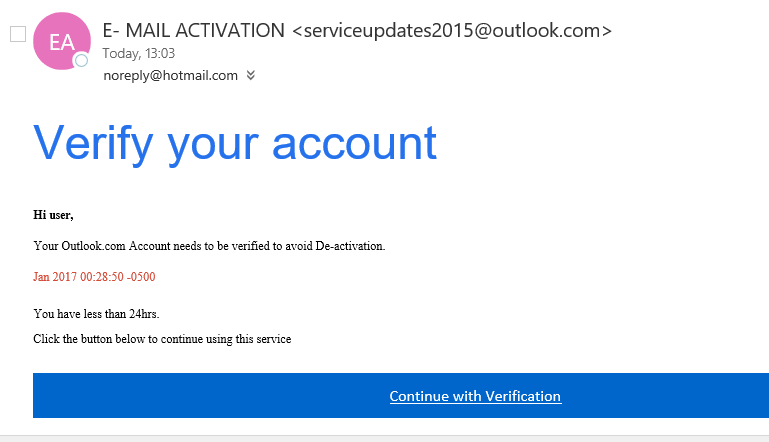Every year, one in ten Americans will be victimized by a scam or fraud. The variety of online fraud has increased with the number of websites and technological advancements. It is vital to know how to distinguish between genuine and scam sites . Let’s have a look at typical scams, their signs, and ways to avoid them.
What are Scam Websites?
Scam websites are used to trick people into sharing certain personal details. These fake websites pose as legitimate sources using different disguises like false security warnings or giveaways. There are millions of legitimate websites competing for the public’s attention. However, some pages are set up by bad guys exist on the Web. These websites attempt to steal information or commit credit card fraud.
How does a Scam Website work?
These scam websites attempt a variety of crimes, including personal data theft, credit card hijacking, and more. Scam websites have a wide variety of methods, including publishing false information, offering extravagant rewards in a monetary exchange, or the like. However, the ultimate goal is always the same: to have you give up personal or financial information.
This website may be a standalone; it is the most often form. There could also be unauthorized overlays on legitimate websites, known as clickjacking. These sites pursue a systematic approach to attracting and misdirecting users regardless of the presentation. Scammers who utilize fake websites will typically use these steps:
- Bait: Hackers attempt to draw users to the website through various methods.
- Compromise: Users authorize an action that will expose their data or devices to the attacker.
- Execute: Hackers use victims’ private information for personal purposes, like further attacks or enrichment. Databases of stolen information may cost thousands of dollars in the Darknet. Alternatively, they can infect user devices with malicious software via social engineering or exploits.
Scammers use many means of communication to attract potential victims to their websites. These include text messaging, email, and social media.
They also use SEO methods to manipulate search engine results so their websites appear higher on the list. Scam websites rely on psychological manipulation techniques to get their promises or alerts through. Scoundrels often use engaging content or warning labels to gain users’ trust. Understanding how scams trick you is an essential part of protecting yourself. Let’s discuss how they manipulate you through the lens of the tricks they use.
How does a Scam Website exploit you?
Sites designed for scams are only sometimes well-made, and careful observation will reveal this. To evade scrutiny, fraudulent websites use a key component of social engineering: emotions. Emotional manipulation can help an attacker bypass your instinct of suspicion. Therefore, these website scams often attempt to instill these emotions in their victims:
- Urgency: Time-sensitive offers or account security alerts that require immediate action can cause you to act without thinking critically.
- Excitement: Attractive promises, such as gift cards or plans to build wealth quickly, can spark optimism and make you ignore potential downsides or risks.
- Fear: Fake virus alerts and account notifications lead to panicked action, often accompanied by haste.
Whether these emotions work together or individually, they help achieve the attacker’s goals. However, a scam can only take advantage of you if it feels relevant or related to you. Because of this, there are many variations of online scam pages.
Types of Scam Website
Like many other types of scams, scam sites operate on a different premise, although they share similar mechanics. Because I accurately describe the types of venues that fraudulent websites are likely to use, you’ll be better able to spot future attempts. Here are some standard formats for scam sites:
1. Phishing Scam Websites
Phishing sites are a popular tool that attempts to present a false picture and trick users into revealing their private information. Although these website scams often mimic legitimate organizations, such as banks and email providers. Hackers often utilize email or other messages to entice users to the site that claim some problems or errors require you to proceed. This scam asks for account logins, credit card information, or additional sensitive information. This ultimately leads to the misuse of anything received from the victims of these attacks.

2. Online Shopping Scam Websites
One of the most common methods is online shopping fraud websites that utilize a fake or low-quality online store to collect victims’ credit card information. These scams are problematic because they can sometimes deliver products or services to create the impression of trustworthiness. However, the quality could be better. Additionally, it’s an uncontrolled portal that allows you to obtain your credit card information for excessive and unauthorized use.
3. Scareware Scam Websites
Scareware websites employ fake security alerts that trick you into downloading malware that imitates antivirus. They accomplish this by falsely claiming your device has a virus or malware; fear and urgency may cause you to download a solution. A legitimate security suite would prevent malware downloads. Scareware may sometimes be even harder to delete than certain malware types, like adware or browser hijackers.
4. Sweepstakes Scam Websites
Sweepstake scams involve giveaways of large prizes that entice participants to take part, ultimately providing personal information to pay a false fee. This fee may be listed as a tax per award or shipping fee. Those who submit their information become susceptible to fraud and never receive the prize.

How to Spot Scam sites
Fortunately, several straightforward methods to safeguard yourself from scammer websites will protect you and your wallet as you navigate the Internet. By adopting these strategies, you can mitigate the effects of these dangers:
- Does the website use language that may cause you to become emotional? If you feel increased urgency, optimism, or fear, proceed with caution.
- Look for improper grammar, such as misspelled words, broken or awkward English, or obvious errors, such as the inappropriate use of plural and singular words.
- No web pages specifically identify the business: A legitimate business website should have basic pages, such as an
"About Us"and a"Contact Us"page. If you’re unsure, contact the company directly. Be aware if the number is a cell phone or if the call still needs to be answered. If a company prefers to avoid verbal communication, there’s probably a reason.
How to avoid Scam Website
It’s important to avoid fraudulent websites through caution and prudence. However, when you cannot ultimately Stumble across these sites, you should take more effective measures to prevent their effects. Avoid these scam-alert websites by following these tips.
Verify the domain’s identity
Scam sites that mimic legitimate sites often use names that resemble the addresses of legitimate sites. For instance, instead of FBI.gov, a fake site might use FBI.com or FBI.org. Be mindful of addresses that begin with .net or .org. These types of domain names are less common for online shopping websites. You can also investigate the person or entity that registered the domain name or URL on sites like Whois.net. These searches are free.

Be mindful of how you spend money
One beneficial practice is to only pay for something directly with a bank transfer. If you transfer money to another bank account and the transaction is fraudulent, you will not be able to ask for a refund. Credit cards offer you some degree of protection if something goes wrong, but they are not completely secure. Your attentiveness remains the biggest protective factor.
Always utilize a reliable connection
When you visit a legitimate website that requests financial or confidential information, the company’s name should be visible in the URL bar next to the lock symbol; this should also indicate that you’re on a secure connection. If you don’t see this symbol or your browser warns you that the site lacks a current security certificate, this is a warning. To increase your safety, always employ the highest quality security software to ensure an additional layer of protection. Also, don’t assume anything; don’t just click links to open a website. Instead, please manually enter the website’s address or store it in your bookmarks. Criminal organizations often purchase domain names that are similar to the genuine ones to confuse customers. You can increase your security by opening the sites manually or keeping the accurate ones.

Is this too good to be true?
The allure of extravagant luxuries beyond your wildest dreams in exchange for a few minutes of your time or minimal effort is a successful scam. Consider the possibility that something is too good to be true. Is the website selling tablets, PCs, or designer shoes that are marked down to an unbelievable price? Is the website of a health product that claims to have larger muscles or a drastic weight loss in just two weeks deceptive? How can you guarantee success? It’s best to assume something that looks very good to be true is not valid.
To avoid becoming a victim of the scam website, you can take advantage of the robust protection of GridinSoft Ani-Malware. This security program will create a reliable shield from all kinds of threats you can probably face. Its Internet Security feature will be your reliable shield against network threats. Things like fake websites or exploit pages will weed out before they can do anything bad to you.





